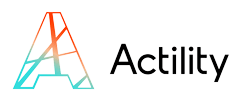

Actility, the industry leader in low power wide area networking, today announces the release of version 4.0, a major upgrade to its market leading ThingPark LPWA network platform. The enhanced software brings network-based geolocation, enabling tracking and geofencing; advanced radio optimization technology to maximize device battery life and network capacity; tools to streamline onboarding of devices for suppliers and network operators, and an improved suite of tools for monitoring and visualizing message flows in the LPWA network.
“ThingPark 4.0 represents a significant step forward for our carrier-grade IoT platform,” says Actility Founder and CTO Olivier Hersent. “The new network-based geolocation capability is obviously the headline feature: we are reaching record-breaking power and cost performance, which will enable a wide variety of new use cases for any customer who wants to locate or track assets, animals or people. The increasing maturity of the platform is clearly demonstrated by the release of tools designed to make it simpler and easier for our customers to manage and optimise large scale commercial deployments of ThingPark-enabled LPWA networks,” Hersent adds.
Actility and top analysts expect that location-based services will become the leading applications for LPWANs in the next 5 years. Network geolocation is ideally suited, for example, to use cases where a customer wants to know if an asset with a tracker attached is moving or stationary, is in one store or depot rather than another, or to receive a warning if it strays out of a defined area. The network-based geolocation feature relies on the fact that in LoRaWAN networks, the signal from a distant sensor is received by multiple gateways (macro-diversity).
By measuring the differences in propagation time from a specific sensor to several LPWAN base stations (which are synchronized to the GPS time reference with 30ns accuracy) as well as strength of the received signal, it is possible for the network to calculate the location of the sensor. The geolocation information is then added to the metadata sent by the ThingPark LPWA network to the customer’s application. Compared to GPS, network-based geolocation typically requires up to 50 times less energy per fix, and enables lower cost and compact designs. “We expect that network-based geolocation, and hybrid techniques combining network-based and other geolocation methods, will revolutionize the world of tracking,” comments Herrsent.
LoRaWAN is a bidirectional communication technology and defines commands which allow the network to control the sensors’ transmit power, uplink repeat rate and data rate (spreading factor). While most implementations control only the data rate (Adaptive Data Rate, or ADR), ThingPark 4.0 introduces a new and more sophisticated algorithm that simultaneouslyy optimizes data rate, transmit power and repeat factor. This improved algorithm reduces the chance of strong signals from nearby sensors “drowning out” weaker signals from more distant ones , increases the quality of reception for hard to reach devices, increases cell capacity and minimizes airtime. This results in improved performance and lower energy consumption for ThingPark 4.0 based LoRaWAN networks, and also allows operators to introduce connectivity price tiers based on quality of service.
Fast industrialization of high quality LoRaWAN devices is critical to the success of LPWANs: the new and improved ThingPark Partner Programme now provides self-testing tools which allow developers to implement continuous testing of their LoRaWAN implementation, with comprehensive library of test scenarios as well as real-time MAC layer analysis. All is needed is a low cost LPWANs picocell in the lab, then the ThingPark partner program provides the full featured network-in-a-sandbox and test tools.
ThingPark 4.0 also introduces improved features for device and application developers, with a common framework allowing the integration of multiple application layer protocols over the LoRaWAN stack, integrated into the ecosystem through easy to use XML REST drivers and interfaces. LPWAN operators also need tools to streamline onboarding and activation of massive numbers of devices. ThingPark 4.0 provides automated onboarding tools, including LPWAN address pool allocation and management application and a fully automated, end to end onboarding process.
Olivier Hersent concludes: “2017 will mark the transition of LPWANs from early adopter phase to a full scale industry. ThingPark 4.0 provides a solid foundation for our operator partners and OEM customers to scale up their end-to-end LPWAN operations and fully automate management of what is going to become the largest technology ecosystem ever.”
© 2024 Actility’s All Rights Reserved